Halberstadt Cl.II (Late)
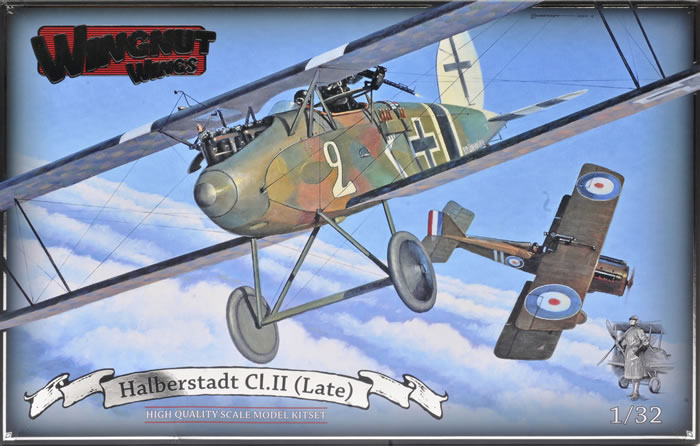
Wingnut Wings, 1/32 scale
| S u m m a r y |
Catalogue Number: |
Wingnut Wings Kit No. 32062 - Halberstadt Cl.II (Late) |
Scale: |
1/32 |
Contents and Media: |
197 parts in grey injection moulded plastic; two parts in clear; nine photo-etched parts; markings for five aircraft on three decals sheets. |
Price: |
USD$129.00 plus shipping available online from Wingnut Wings' website
Pre Order GBP£116.09 EU Price (£96.74 Export Price) plus shipping available online from Hannants |
Review Type: |
First Look |
Advantages: |
High level of detail; outstanding representation of fabric, rib baton and general surface textures; high quality mouldings with fine sprue attachments; comprehensive decal sheet in perfect register with minimal carrier film; full-colour instruction booklet doubles as a one-stop reference. |
Disadvantages: |
|
Conclusion: |
As always, Wingnut Wings extracts the best possible results from plastic moulding technology thanks to their exemplary research, brilliant digital modelling and eagle-eyed supervision of the mould cutting, toolmaking and production process. The result is a series of kits that has inspired many modellers who might not have previously considered building either a WWI subject or a 1/32 scale model to try something different.
The new Halberstadt hits Wingnut Wings' high benchmarks and does so with quite a manageable parts count. This is a decent sized aircraft and some of the colours and markings are very striking.
Oh Wingnut Wings, you've done it again!. |
Reviewed by Brett Green

HyperScale is proudly supported by Squadron
The Halberstadt CL.II was a German two-seat escort fighter/ground attack aircraft of World War I. It served in large numbers with the German Luftstreitkräfte (Imperial German Army Air Service) in 1917-18.
The CL.II entered service in August 1917, and proved extremely successful, its excellent maneuverability, rate of climb and good field of fire for its armament allowing it to match opposing single-seat fighters.
It also proved to be well suited to close-support, which became the primary role of the CL-type aircraft, the units operating them being re-designated Schlachtstaffeln (Battle flights).
Ground support by the Schlachtstaffeln proved very effective, being used both in support of German attacks and to disrupt enemy attacks. An early example of the successful use of CL type aircraft in the ground attack role was during the German counterattack on 30 November 1917 during the Battle of Cambrai, where they were a major factor in the German performance.

The captured German Halberstadt CL.II (serial 15342/17) flown by Gefreiter Kuesler and Vizefeldwebel Mullenbach on 9 June 1918 when they were forced to land at the aerodrome of 3 Squadron Australian Flying Corps at Flesselles, Somme (France). The AFC aircrew were Lieutenant R.J. Armstrong and Lieutenant F.J. Mart flying in Royal Aircraft Factory R.E.8 (serial D4689). Frank Luke with a shot down Halberstadt of Flieger Abteilung 36 on September 18, 1918.
The success of the German tactics at Cambrai, including the use of close air support, resulted in the Germans assembling large numbers of CL-types in support of the Spring Offensive in March 1918, with 38 Schlachtstaffeln (equipped with the CL.II, CL.IV and the Hannover CL.III) available, of which 27 were deployed against the British forces during the initial attack Operation Michael.
The CL.II continued in service until the end of the War. *
* Historical background courtesy of Wikipedia
Wingnut Wing continues its Yuletide tradition this year with another trio of Christmas releases - two Halberstadts and a dogfight double set.
Tonight I am reviewing their 1/32 scale Halberstadt Cl.II (Late).
Wingnut Wings’ 1/32 scale Halberstadt Cl.II (Late) comprises197 parts in grey injection moulded plastic, two parts in clear, nine parts on a single photo-etched fret and markings for five aircraft across three decal sheets.
In common with their earlier releases, Wingnut Wings' new Halberstadt boasts outstanding representation of stretched fabric, stitching and general surface texture; plus raised details where appropriate.
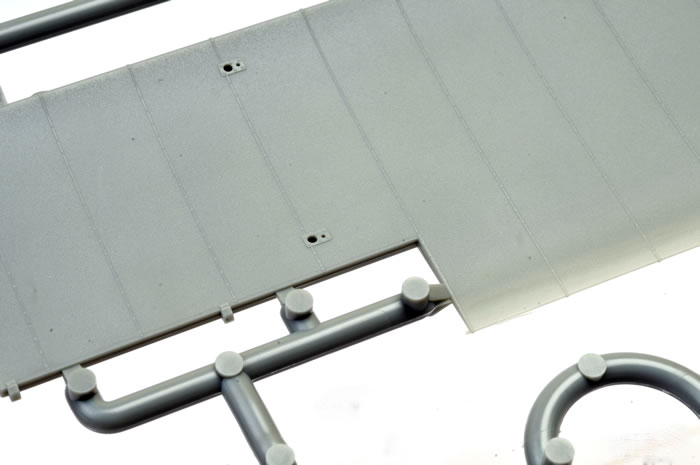
The two-seater cockpit is comprehensively fitted out with detailed framework, instruments, seats, optional radio and amplifier, and much more. An optional quilted cushion is offered for each seat too. They look ccomfy, but I think I would prefer a parachute. Photo-etched lap harness straps are supplied for both seats.
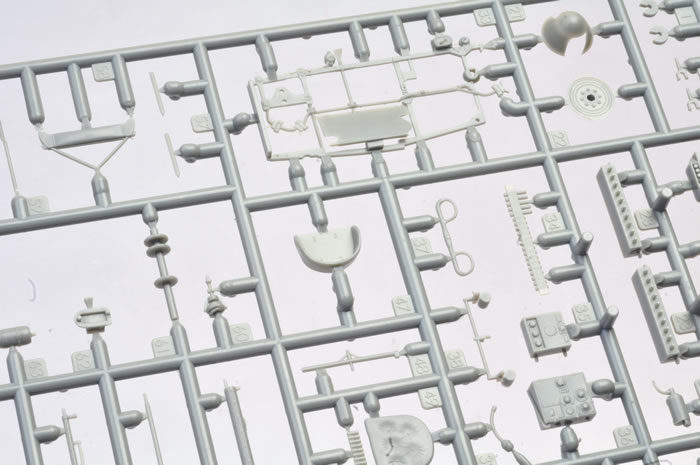
We have seen the 160hp Daimler- Mercedes D.III engine in previous releases, and it looks just as nice here with its radiator pipes and manifolds. It is very well detailed straight from the box. Engine cowlings are separate parts that may be left off to display the engine.
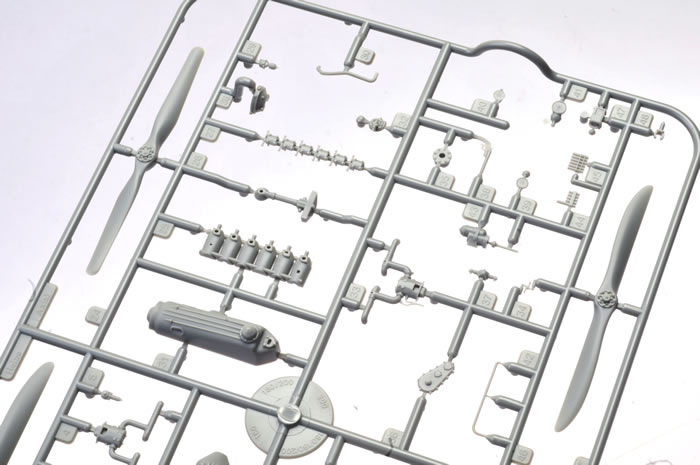
Kit engineering is relatively conventional with the two fuselage halves and the wings moulded as one-piece left and right sections for the upper and lower decks. The upper wings are joined either side of a centre section that incorporates a fuel tanks and radiator.
The wing arrangement is relatively simple with just two interplane struts on each side. Locating positions are positive. Two pairs of fuselage mounted cabane struts complete the attachment points for the upper wings.
The horizontal tail is a single part with the elevators moulded in the neutral position.
The photo-etched fret offers harness straps, machine gun jackets and gunsight rings.
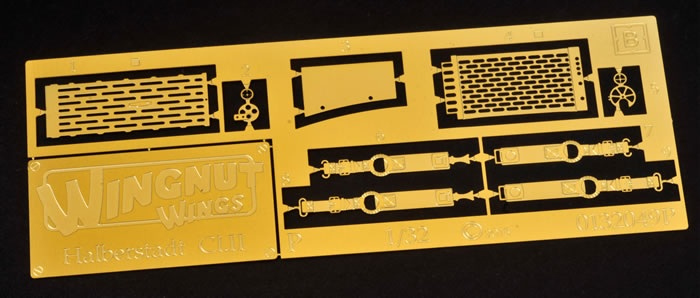
Options include radio, amplifier, seat cushions, some cockpit and engine fittings, alternative gun rings, optional plastic or photo-etched cooling jackets for the Spandau machine gun, different style of propellers and observer's armament, grenades, bombs, flare pistols and ammo..
The wheels are supplied in plastic, including wheels and covers.
The clear parts are thin and free from distortion.
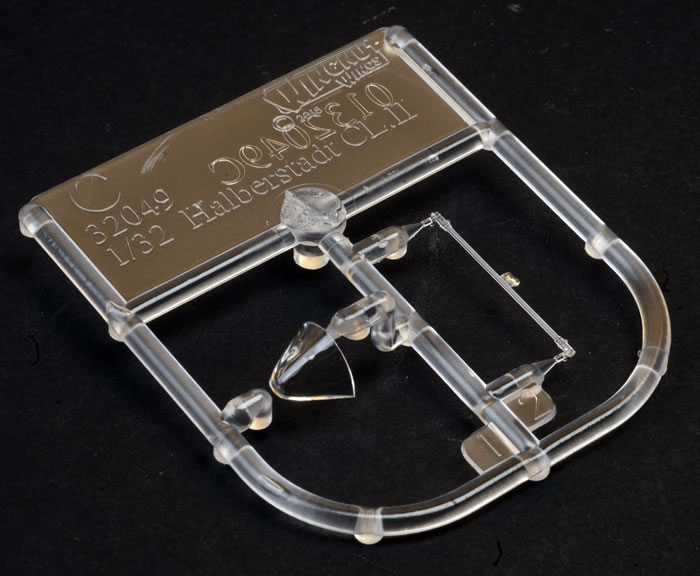
The 28 page instruction booklet is presented in the same format as its predecessors, with 3D construction views supplemented by generous reference photos of wartime machines.
Marking Options
Five marking options are provided in various combinations of paint and lozenge.
Three decals sheets are supplied. One is a large sheet with mainly national markings and stencils. A number of the national markings are depicted as roughly overpainting early-style iron crosses. This is very effective

A second large sheet provides lozenge decals in two schemes for the upper and loer wings. Lozenge strips are printed directly onto the main fabruc pattern. Control surfaces are separate decals.\
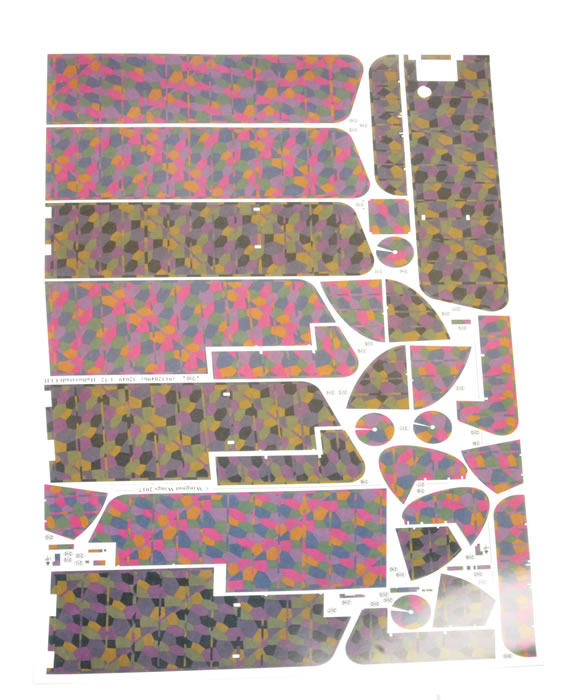
The third, smaller decal sheet offers white stripes for the fuselage of marking option C.

The decal sheets are printed by Cartograf. They are in perfect register and feature thin surrounds.
As always, Wingnut Wings extracts the best possible results from plastic moulding technology thanks to their exemplary research, brilliant digital modelling and eagle-eyed supervision of the mould cutting, toolmaking and production process.
The result is a series of kits that has inspired many modellers who might not have previously considered building either a WWI subject or a 1/32 scale model to try something different.
The new Halberstadt hits Wingnut Wings' high benchmarks and does so with quite a manageable parts count.
This is a decent sized aircraft and some of the colours and markings are very striking.
Oh Wingnut Wings, you've done it again!
Thanks to Wingnut Wings for the review sample.
Review Text and Images Copyright © 2018 by Brett Green
Page Created 18 December, 2017
Last updated
18 December, 2018
Back to HyperScale Main Page

|
